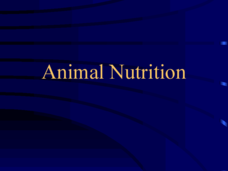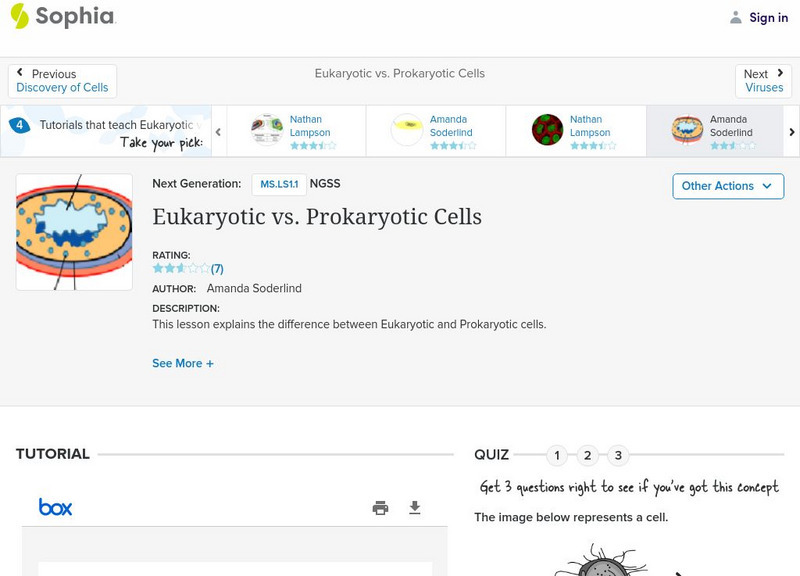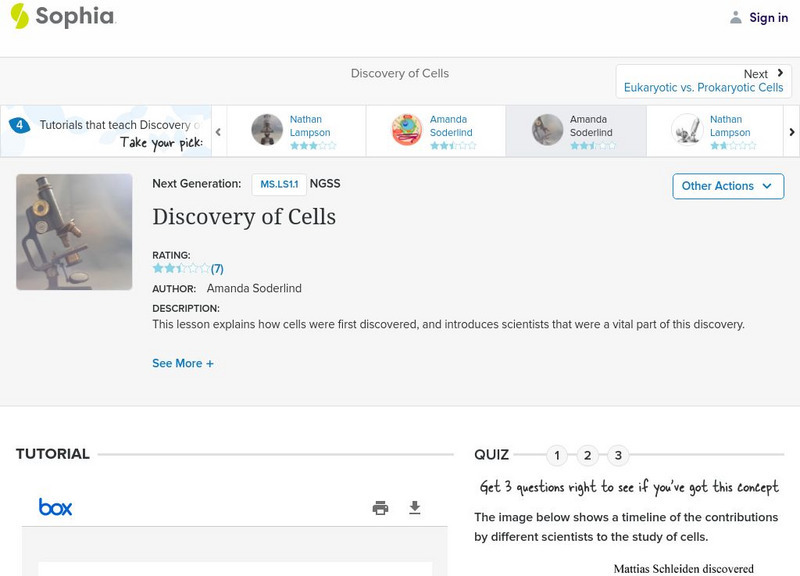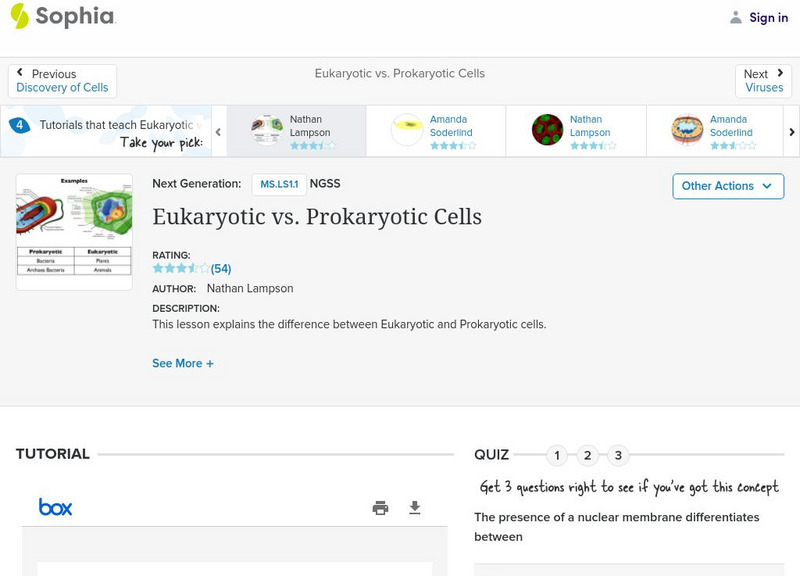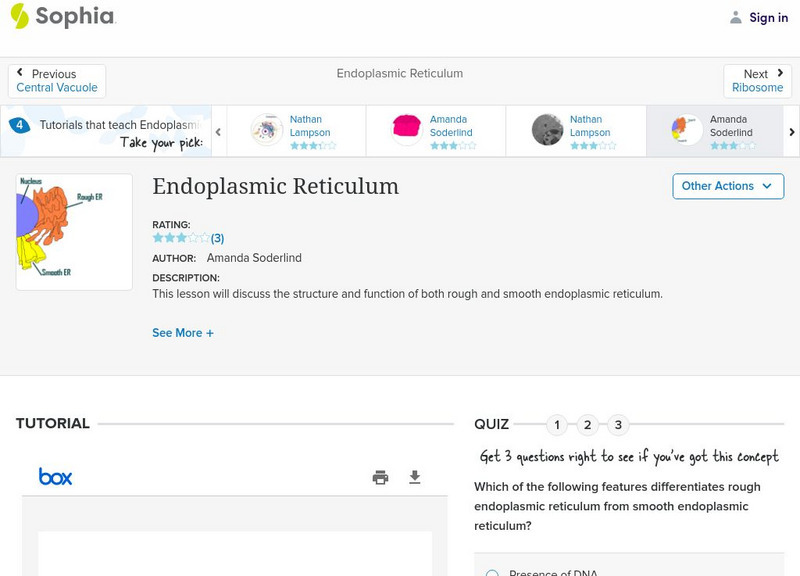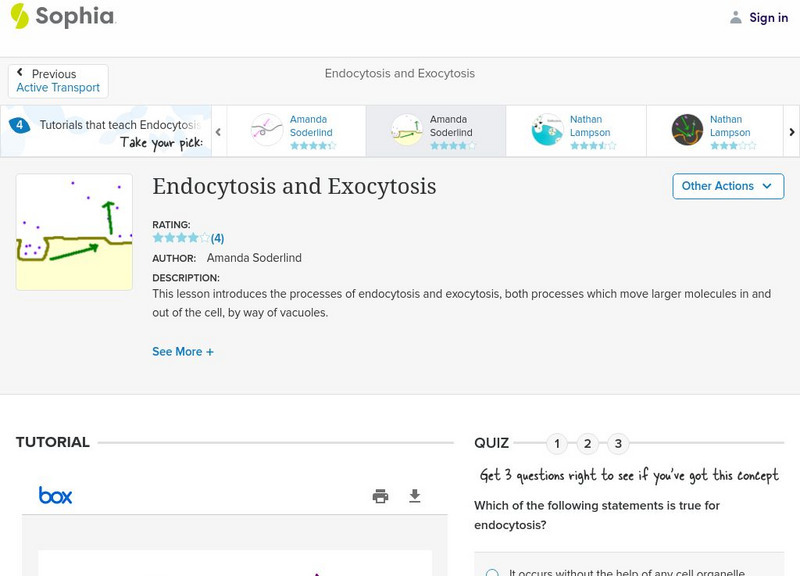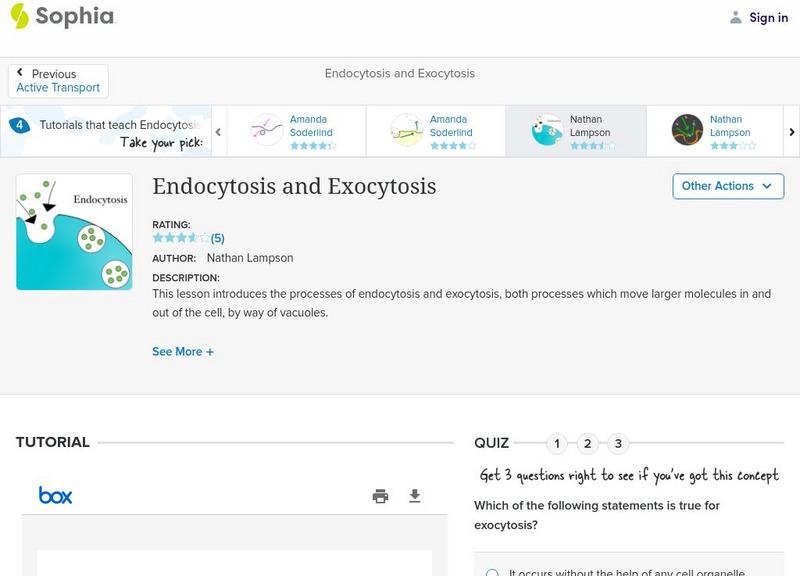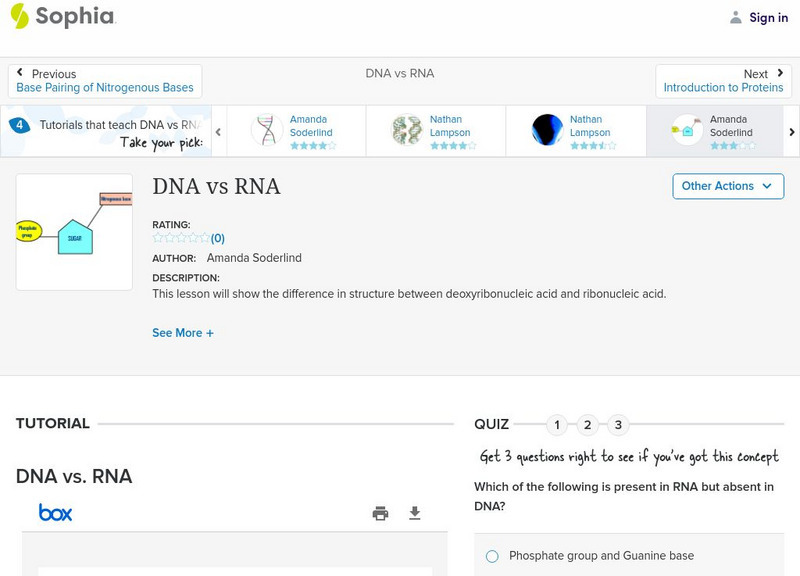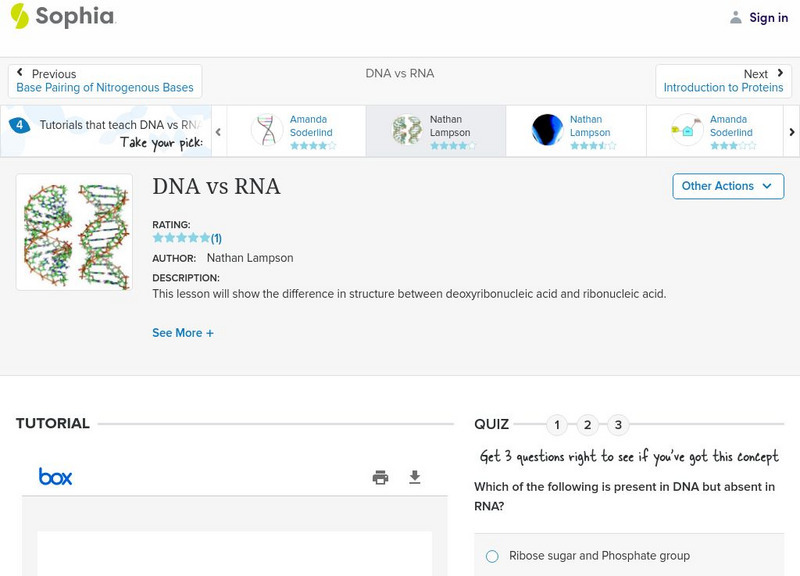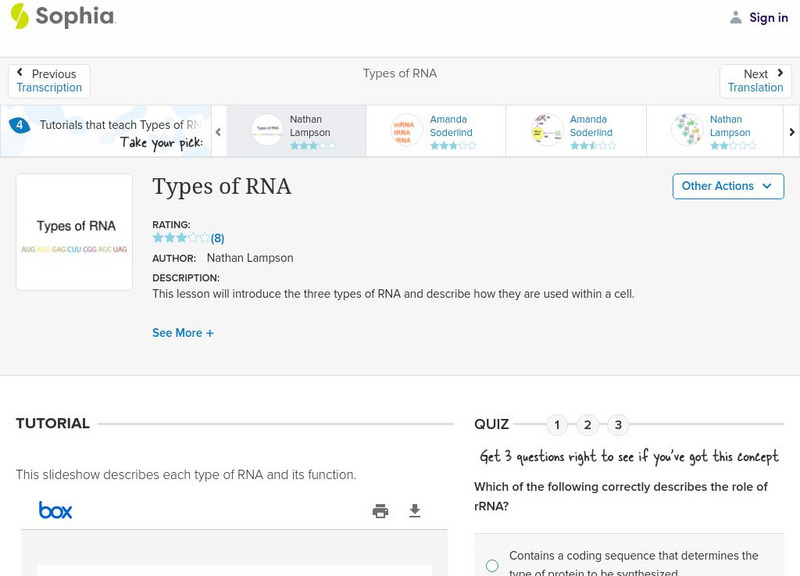Curated OER
Metabolism & Enzymes
More extensive than just a general overview of digestion and reactions, this slide show gives information about all areas of enzyme function. Topics like the chemistry behind efficiency of enzymes, factors that affect speed of...
Biology Junction
Nonvascular and Simple Vascular Plants: Mosses to Ferns
Sometimes conservationists use specific plants to prevent erosion or fight invasive species. A 50-slide presentation covers both nonvascular and vascular plants. It discusses the plants, their stages and life cycles, reproduction, uses,...
Biology Junction
Protein Synthesis
Watson and Crick built the first model of DNA in the 1950s, and our understanding of DNA since then continues to grow exponentially. Scholars learn about protein synthesis by observing a presentation and completing a worksheet. Both walk...
Curated OER
Fungi
The general characteristics that affect the classification of fungi and other organisms in the domain Eukarya are detailed on 12 attractive slides. Teachers can access individual slides to cover life cycles or diversity, or can use the...
Curated OER
Animal Nutrition
Use this great overview to give information on all aspects of nutrition. By working their way through this PowerPoint, students review a lot of information about the digestive process. Students read many facts on a number of...
Curated OER
Integumentary System: A System, An Organ, the Biggest!
It is only six short slides, but an acceptable outline of the integumentary system. General facts about the system, layers, sublayers, and functions are listed as bullet-points. What would make this presentation more engaging for your...
Curated OER
Health Careers
Each of the 9 slides have a list of possible careers within areas of the Health industry. There are no explanations or details of any of the jobs and so this would be useful to introduce the areas and then let the students research...
Wisc-Online
Wisc Online: Identifying Eukaryotic Animal Cell Organelles
This is a tutorial slideshow showing the internal structure of an animal eukaryotic cell. Each slide has excellent labeled drawings accompanied by descriptive text explaining the function of each part.
Sophia Learning
Sophia: Eukaryotic vs. Prokaryotic Cells: Lesson 3
This lesson explains the difference between Eukaryotic and Prokaryotic cells. It is 3 of 4 in the series titled "Eukaryotic vs. Prokaryotic Cells."
Sophia Learning
Sophia: Discovery of Cells: Lesson 4
This lesson explains how cells were first discovered, and introduces scientists that were a vital part of this discovery. It is 4 of 4 in the series titled "Discovery of Cells."
Sophia Learning
Sophia: Discovery of Cells: Lesson 2
This lesson explains how cells were first discovered, and introduces scientists that were a vital part of this discovery. It is 2 of 4 in the series titled "Discovery of Cells."
Sophia Learning
Sophia: Enzyme Structure: Lesson 2
This lesson will describe that enzymes are made of proteins, and can be found in nature or can be synthesized synthetically. It is 2 of 4 in the series titled "Enzyme Structure."
Sophia Learning
Sophia: Cells: The Structural and Functional Units of Life
An illustrated presentation introducing the structure and function of the cell, including the two different types of cells: prokaryotic and eukaryotic.
Sophia Learning
Sophia: Eukaryotic vs. Prokaryotic Cells
A slide-show presentation illustrating the differences between eukaryotic and prokaryotic cells.
Sophia Learning
Sophia: Cells: The Structural and Functional Units of Life: Lesson 1
This lesson will illustrate the structure and function of the cell. It is 1 of 4 in the series titled "Cells: The Structural and Functional Units of Life."
Sophia Learning
Sophia: Endoplasmic Reticulum: Lesson 4
This lesson will discuss the structure and function of both rough and smooth endoplasmic reticulum. It is 4 of 6 in the series titled "Endoplasmic Reticulum."
University of Tulsa
University of Tulsa: Cell Energetics
This is the index page for a slide series on cell energetics. Among the topics covered in the series is the role of enzymes in the metabolic process. Use the topic list to go straight to any slide.
Sophia Learning
Sophia: Cell Wall: Lesson 4
This lesson will discuss the structure and function of a cell wall. It is 4 of 4 in the series titled "Cell Wall."
Sophia Learning
Sophia: Cell Membrane: Lesson 6
This lesson will discuss the structure and function of the cell membrane. It is 6 of 6 in the series titled "Cell Membrane."
Sophia Learning
Sophia: Endocytosis and Exocytosis: Lesson 3
This lesson introduces the processes of endocytosis and exocytosis, both processes which move larger molecules in and out of the cell, by way of vacuoles. It is 3 of 4 in the series titled "Endocytosis and Exocytosis."
Sophia Learning
Sophia: Endocytosis and Exocytosis: Lesson 4
This lesson introduces the processes of endocytosis and exocytosis, both processes which move larger molecules in and out of the cell, by way of vacuoles. It is 4 of 4 in the series titled "Endocytosis and Exocytosis."
Sophia Learning
Sophia: Dna vs Rna: Lesson 3
This lesson will show the difference in structure between deoxyribonucleic acid and ribonucleic acid. It is 3 of 4 in the series titled "DNA vs RNA."
Sophia Learning
Sophia: Dna vs Rna: Lesson 4
This lesson will show the difference in structure between deoxyribonucleic acid and ribonucleic acid. It is 4 of 4 in the series titled "DNA vs RNA."
Sophia Learning
Sophia: Types of Rna
A brief overview presenting the three types of RNA responsible for protein synthesis in the cell.
Other popular searches
- Plant Cell Biology
- Inquiry Based Cell Biology
- Cell Biology Mitosis
- Cell Structure Powerpoint
- Cell Biology Meiosis
- Cell Structure and Function
- Cell Biology Vocabulary
- Label Cell Parts
- Grade 11 Cell Biology
- Cell Parts Pictures
- Cell Biology Activities
- Human Cell Biology






